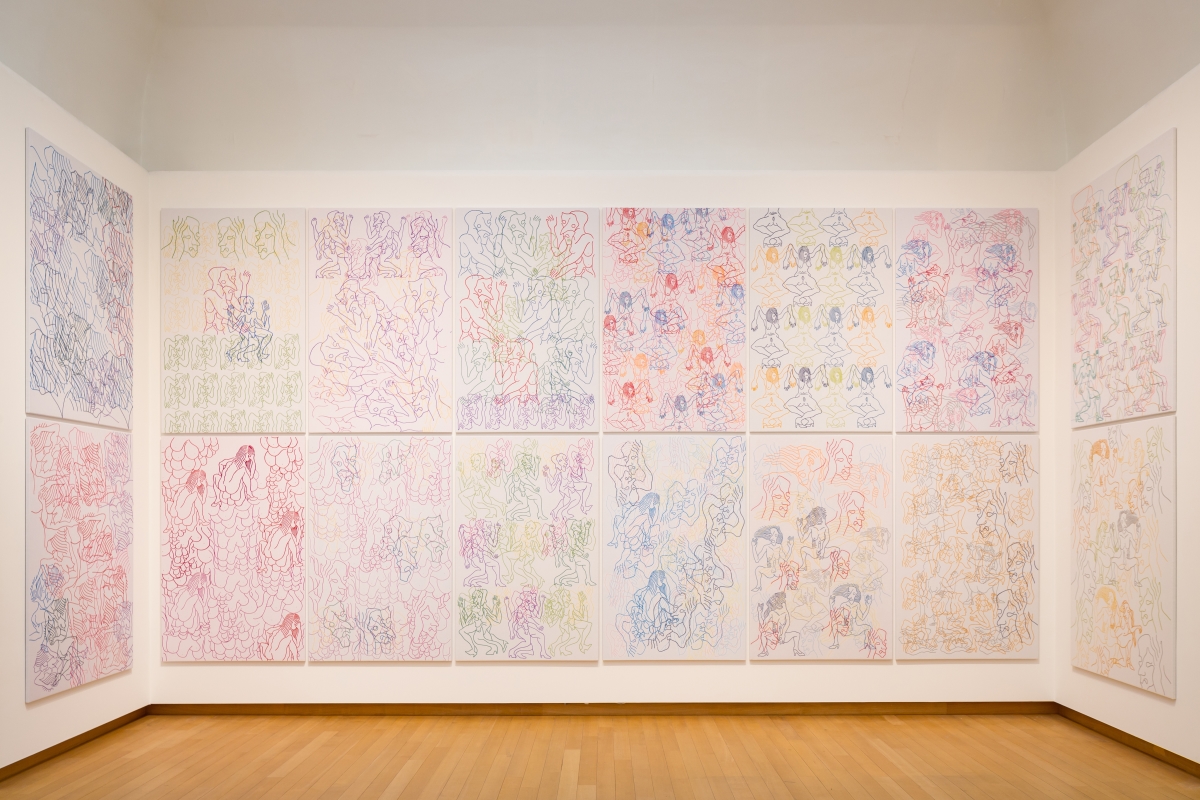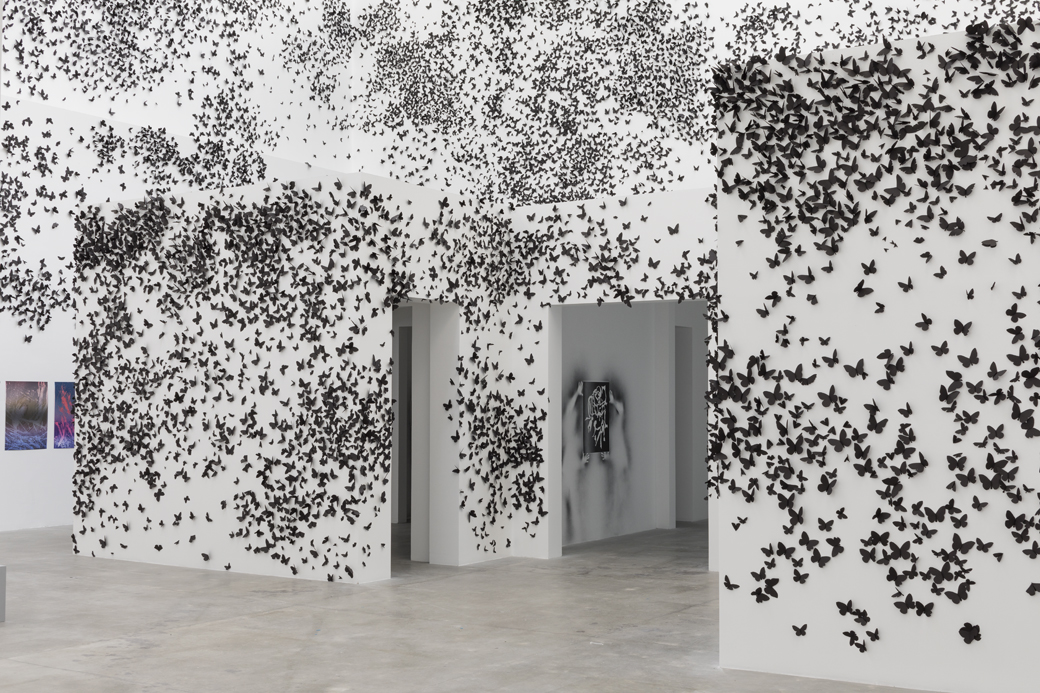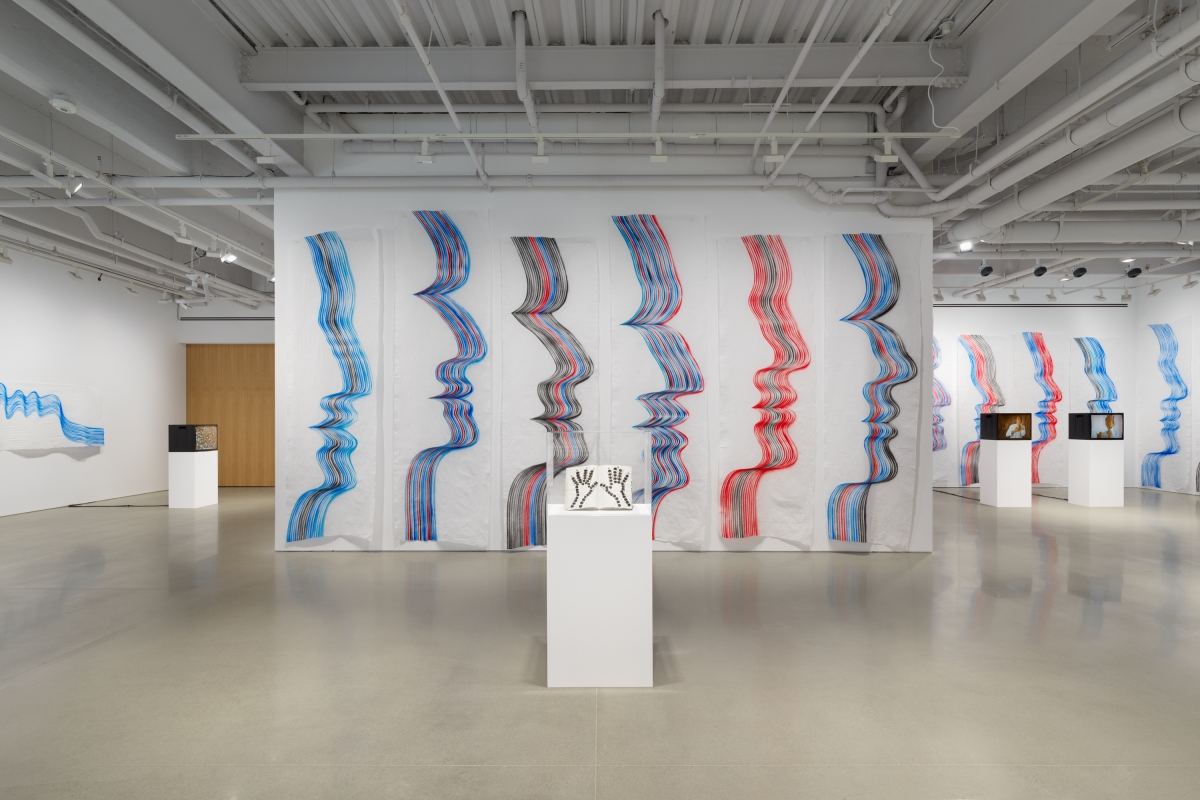
Artist’s Biography
Carlos Amorales, 1970, Mexico City
In his artistic research, Carlos Amorales is interested mainly in language and the impossibility/possibility of communicating through means that are unrecognizable or not codified: sounds, gestures, and symbols. Amorales experiments at the limits between image and sign with an array of platforms: animation, video, film, drawing, installation, performance, and sound. His practice is based on different forms of translation: instruments that become characters in his films, letters that become shapes, and narratives unfold as non-verbal actions. As the basis for many of his explorations, Amorales has used Liquid Archive: a project composed of shapes, lines and nodes instead of words that he started in 1998 and continued to nourish for over ten years. In addition to Liquid Archive, he has developed other alphabets and systems that he uses to translate texts that range from museum labels to short stories. The works of Amorales exist in an alternate world of their own making, parallel to ours; constantly evolving at the same rhythm that they are produced.
Carlos Amorales studied in Amsterdam at the Gerrit Rietveld Academie (1996–97) and Rijksakademie van beeldende kunsten (1992–95). He has participated in artistic residencies at the Atelier Calder in Saché (2012) and MAC/VAL, Vitry-sur-Seine in France (2011), and as part of the Smithsonian Artist Research Fellowship program in Washington, D.C. (2010).
Carlos Amorales lives and works in Mexico City.
Source: Here
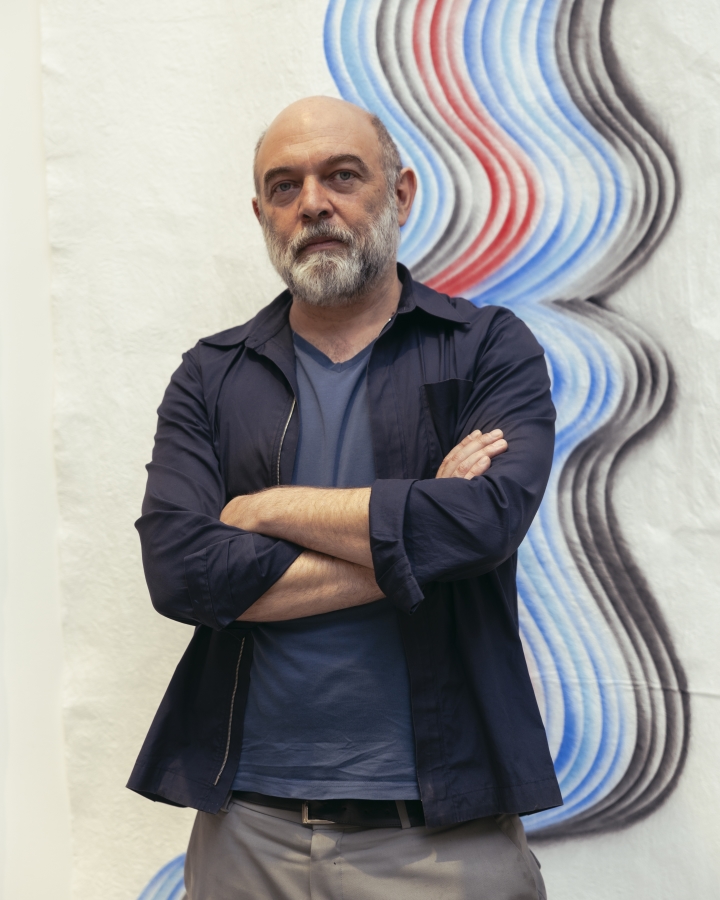
Interview Artist
Carlos Amorales
By Carol Real
How do you address social issues in your work, and how do you relate to society?
I have always been interested in how art relates to society beyond the art world. A critical question in my work is whether art remains art when situated outside the art world, or if it becomes something else or loses its meaning. It is because of this question that I have been interested in collaborating with non-visual artists, such as wrestlers, actors, dancers, musicians, writers, journalists, etc. I believe this has allowed me to open up to the world beyond our professional context. Art for art’s sake is fascinating, but even more so when it speaks about life and what we, as people, share.
What role does language play in your work, and how do you intertwine it with technology and the body?
As a member of a Basque-French family that migrated to Mexico during the mid-20th century, and having spent three years of my childhood in London followed by residing in the Netherlands from 19 to 34, I have a complex connection with language. I have experienced the process of acquiring and relinquishing various languages at different stages of my life. I am very interested in the moment when, faced with language incomprehension, one becomes defenseless and loses agency. The foreigner always has to make sense of signs in relation to the context in which they are inscribed, so they are perpetually suspended in a second or third plane, in a second or third time, meaning they always arrive a bit late. The foreigner is never on time. This exhibition addresses that sense of foreignness, not in a cultural or geographical sense, but in terms of an artistic discipline. It is about venturing into music as a foreigner. To do so, I work with musicians who use their own bodies (voice and clapping) and film them using the ubiquitous contemporary technology of ZOOM, as it records slightly delayed, out of sync.
Carlos Amorales, installation view of Words of Mouth and Hands, Kurimanzutto, New York, 2023. Photo by Dan Bradica
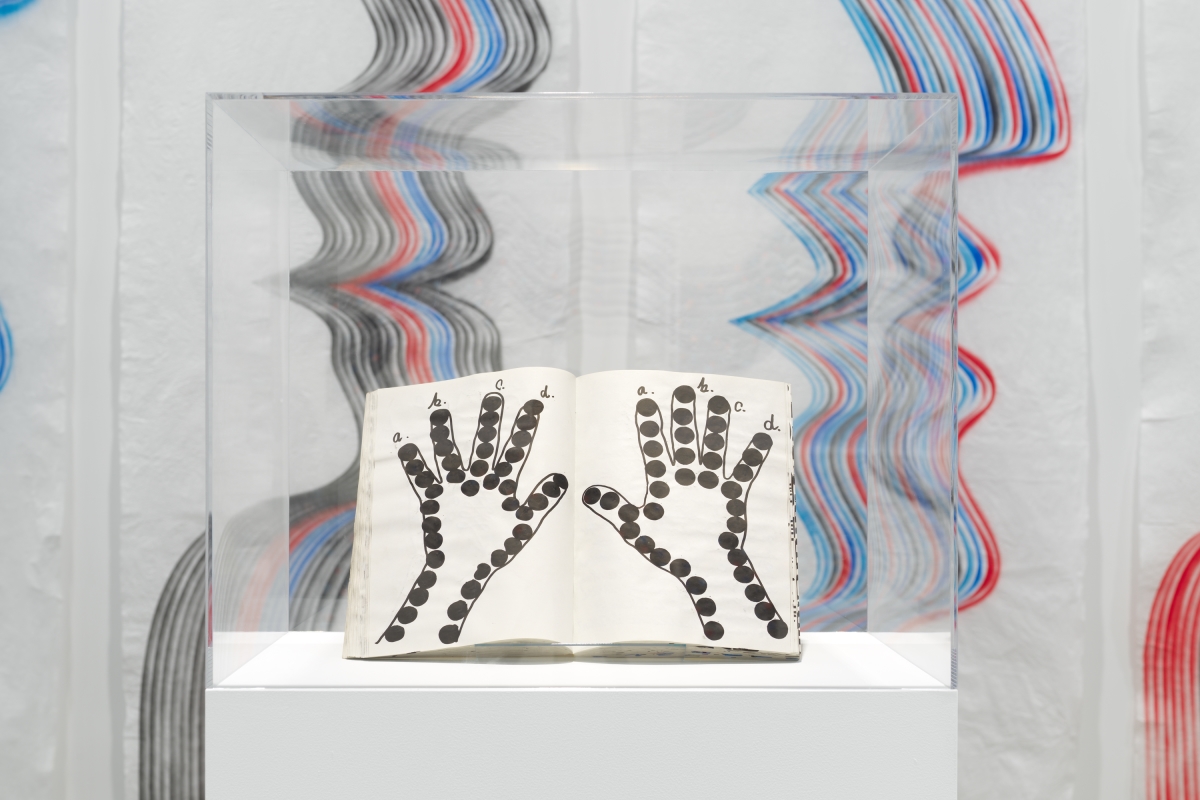

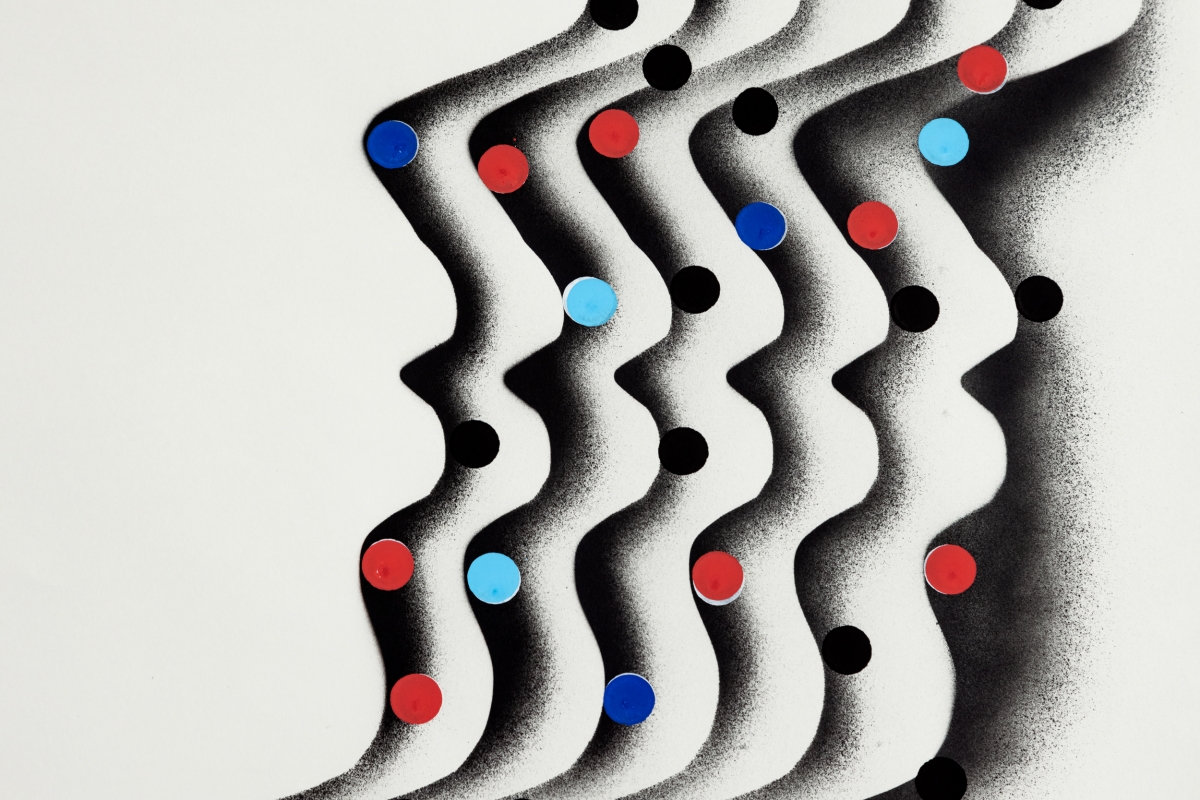
What has been the most memorable or exciting moment in your artistic career?
That’s a difficult question to answer! There have been very different and significant moments, like when in 2000, dressed as a wrestler, I entered the Tijuana Arena in front of an audience of 3,000 fans booing me! Or more recently, in 2019, when I presented a retrospective of my artistic career at the Stedelijk Museum in Amsterdam, the city where I studied and spent a lot of time when I was younger. Exhibiting in New York is always very exciting, and I currently have an exhibition at Kurimanzutto in Chelsea.
How would you describe the experience of collaborating with other artists and professionals in your projects?
Working with other artists and professionals always involves communication challenges. It might seem simple to understand each other among creative individuals, but it requires joint effort. Throughout my career, for example, I have collaborated with many different musicians (from classical musicians to rockers), and it has consistently involved opening up a series of dialogues to reach a common goal. I really enjoy that moment of collaboration because it allows me to discover someone else’s world and broaden my knowledge.
What can you tell us about your current solo show, Words of Mouth and Hands, in NYC?
This project originated from a public art commission I received in the Netherlands before the pandemic. For this commission, I collaborated with choirs since 25% of the Dutch population participates in choral singing. The exhibition revolves around my interest in voice, specifically choirs. I developed a series of signs and symbols specifically designed to conduct a choir. I am particularly fascinated by the way a choir conductor leads the group and shapes the sound by drawing forms in the air, as if sculpting the sound itself. I am captivated by how these polyphonic chants (such as Baroque madrigals) occupy space, as if they were gaseous matter, creating sublime forms. I wanted to create an exhibition about these sublime forms, which are light and delicate.
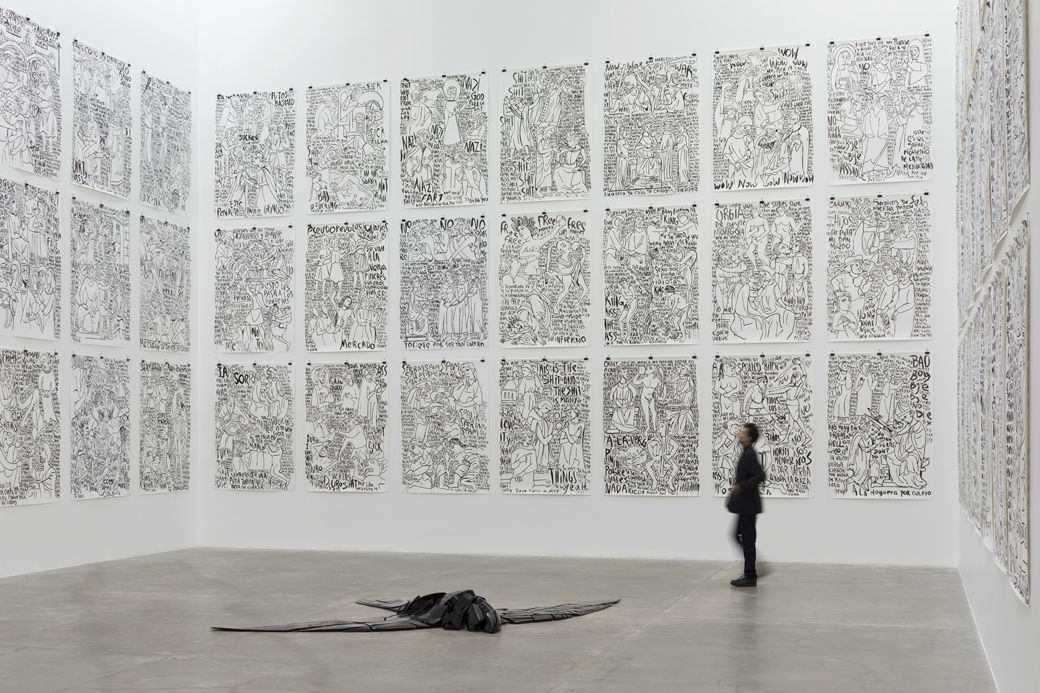
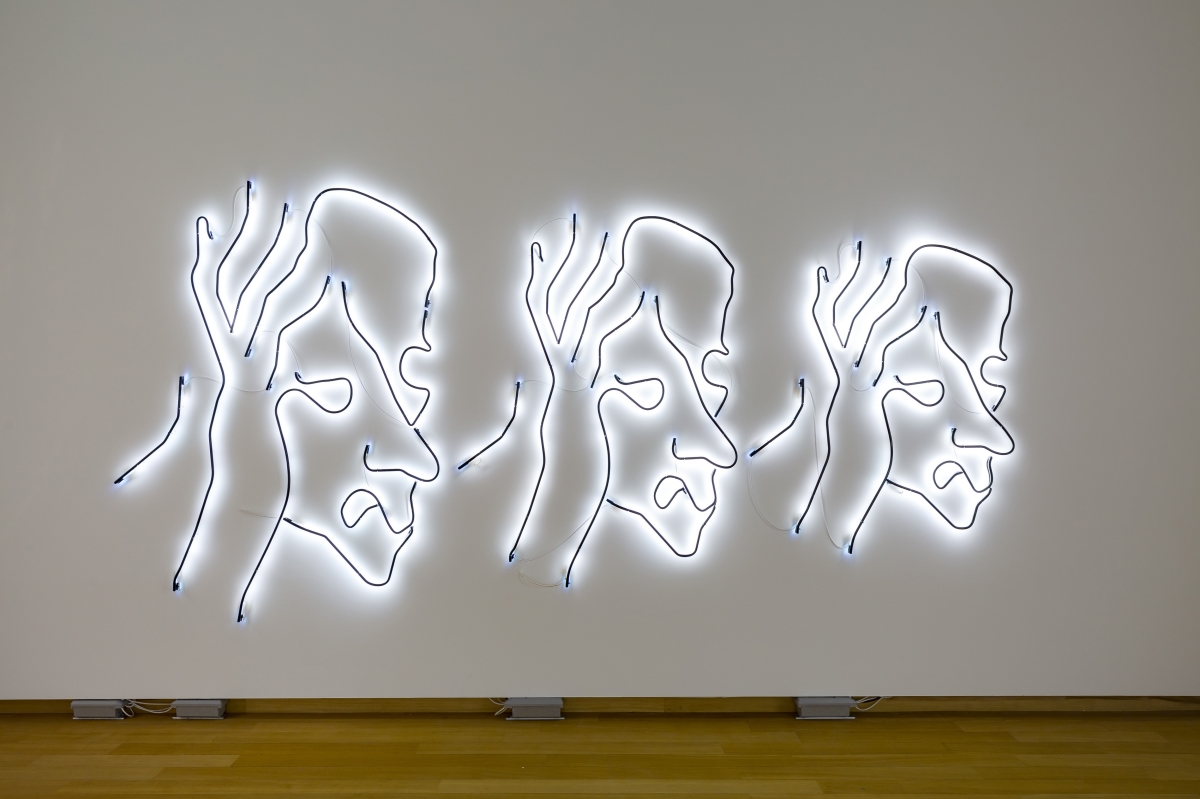
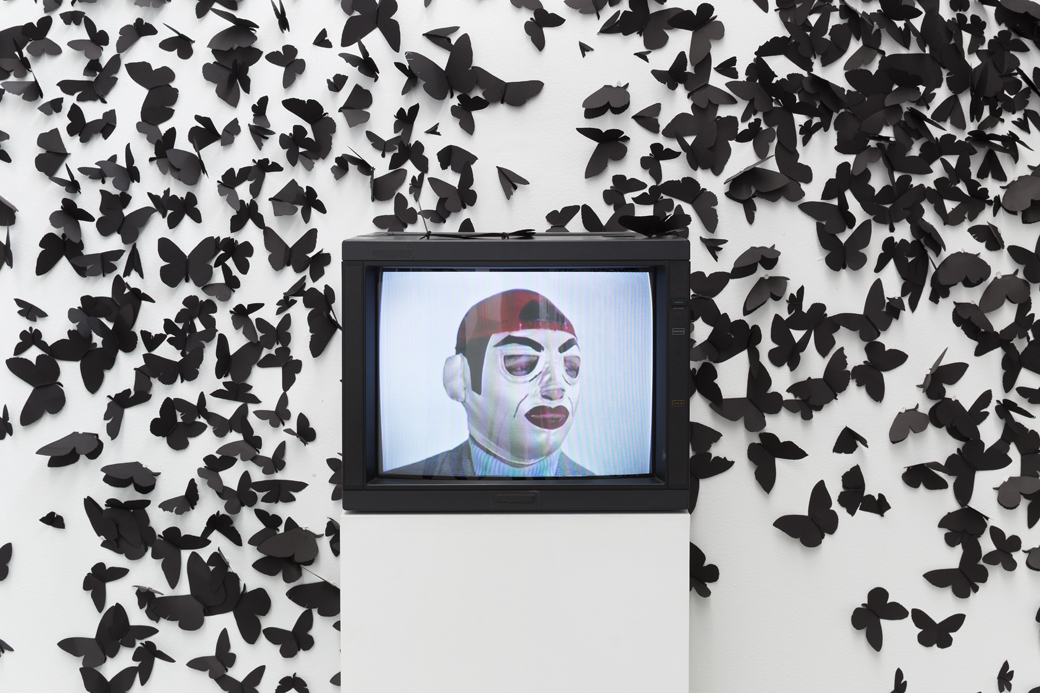
What is the importance of the audience in your work, and how do you hope they will react or interact with it?
I’m the kind of artist who lets the audience interpret my work. I don’t know if it’s something about me personally, but I don’t feel that I can tell people truths, so I like to suggest things in a more poetic way, allowing each person to arrive at their own interpretation of the artwork. That being said, I am very interested in how spectators discover and navigate through artworks in an exhibition. I carefully consider the architecture of the exhibition space and make the most of the journey. Filmmakers make movies, writers create novels, musicians compose symphonies, and we, visual artists, create exhibitions. For me, the exhibition is more critical than the individual artwork itself, which means I always consider the audience.
Image credits: All images courtesy of the artist and Kurimanzutto.
Editor: Kristen Evangelista
